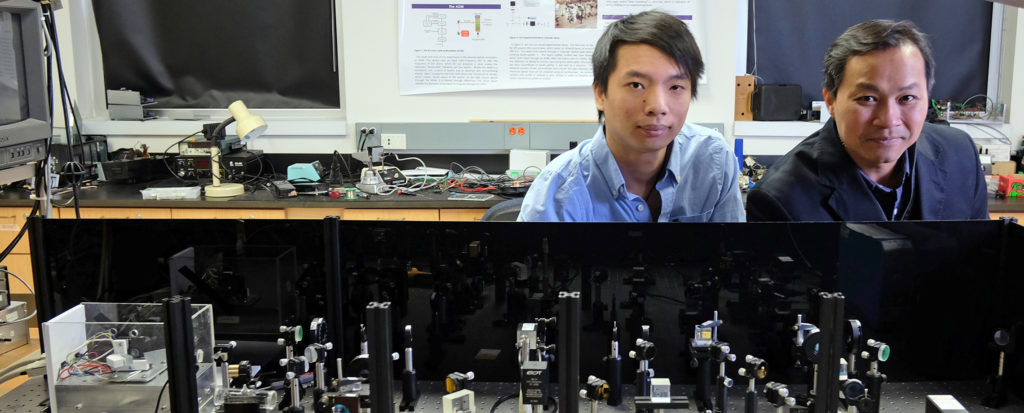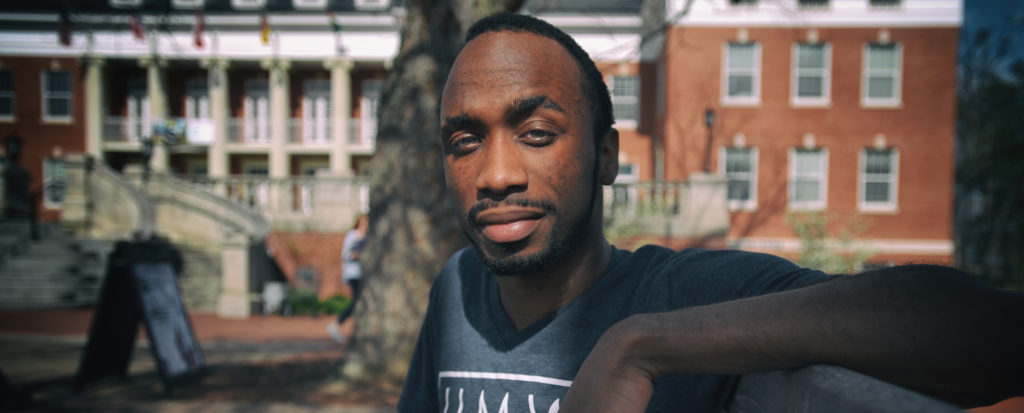Cancer may be up against some of the brightest minds in the University of Mary Washington’s physics department.
That, and a collection of nanoparticles smaller than the human eye can see.
Physics Chair Hai Nguyen and rising senior physics and mathematics double major Pengcheng Zhang are crafting a project that could lead to groundbreaking cancer research.
This cutting-edge venture is nothing uncommon for the intimate group of students and faculty who make up the physics department, according to Nguyen. Driven, determined, communal and curious, students and faculty work on projects ranging from internships with NASA, giving presentations for adults and school-age children and testing the slowing of light with a full board of lasers.

Their nanoparticle experiment, which has been in the works for close to a year, uses a specific laser light to test whether nanoparticles could enter the human body at certain temperatures without damaging the body itself. Research using the type of laser light, measuring a wavelength of 915 nanometers, has begun only as recently as 2011 in the scientific community, according to Zhang.
Results have yet to be documented of this laser’s effects on nanoparticles or how it could act in the body, particularly as some nanoparticles may have been found to attach to cancer cells.
Zhang and Nguyen, who meet a few hours a week to work on the project, aim to be among the first to document these results.
Though their experiment is no small feat, the particles they work with might be better seen under a microscope. According to Nguyen, fellow UMW physics assistant professor Josephus Ferguson and collaborators from Virginia Commonwealth University, their collection of nanoparticles measure approximately 32.5 nanometers. These particles are so small that if you lay them in your hand, they could slide through your skin into your body.
Working to challenge his students and give them a meaningful experience with potential real-world change, Nguyen kick-starts projects that also challenge and inspire him.
“What I want from my students is to have true ownership of what they do,” Nguyen said. “They take on [this project] and say that it’s theirs.”
Their goal is to record and publish their results in the hope that researchers who specialize in cancer treatment can pick up the experiment where they left off.
So far, the experiment and specialized equipment have cost $30,000 with funding and equipment from organizations like the University of Paris, Kansas State University and financial support from UMW’s Office of the Dean of Arts and Sciences. Even still, Zhang has looked to offset the costs of the project by making tools at UMW they could not get anywhere else. Using a 3D printer and his skills in mathematics to create the exact dimensions, he designed an optical fiber adaptor.
Zhang has spent weekends and summers on the project, rushing from math classes across campus to reach the lab. He also presented the experiment for UMW’s Student Research and Creativity Symposium this year and last year and is doing two additional independent studies with the physics and math departments.
The possible real-world impact of the nanoparticle experiment has driven him to keep researching.
“This could be something that is very personal to everyone,” Zhang said of the experiment that has sparked interest across the chemistry and biology departments.
Physics has given him the chance to set down the textbook and take on projects that are both potentially risky and potentially rewarding.
“Physics is not as scary as you might think,” Zhang said, who plans to pursue a graduate program in mathematical physics. “It requires a logical mind and some persistence, but nothing more. Physics give you more curiosity, but more importantly, it gives you the ability to explore your curiosity.”
